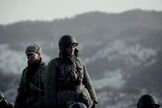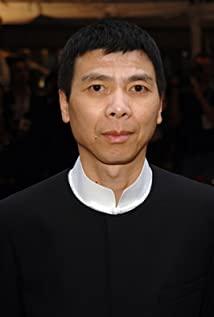A group of soldiers who share life and death and are connected by flesh and blood; an officer who lost his identity but never gave up; a rallying horn that never blew, an unknown story of betrayal. "Assembly", as director Feng Xiaogang's transformational work, is not to create traditional heroes who see death as a return, but to use profound humanistic care, to schedule and control war scenes, and to shape the characters' personalities. It has achieved the double impact of vision and hearing, and has also become a milestone in the history of Chinese film war films. In the war years when the gunfire was raging, individuals overcame the fear and cowardice of death, died for the justice they believed in, lived to death, sacrificed their lives to take care of the overall situation, and finally realized their own value.
Different from traditional war films, which focus on creating thrilling plots and personal heroism, Director Feng uses a very distinctive audio-visual language in this film to break through the traditional theme mode, face the instinct of human nature, and make extremely profound thinking . Both big and small people have performed endless joys and sorrows in these more than 100 minutes, showing the audience a turbulent war history.
Mardan once said: "The camera lens is the most powerful to show the psychological and dramatic meaning of a film." For example, a large number of hand-held panning lenses appear in the film to shoot on the battlefield, which increases the realism of the film. At the beginning, Gu Zidi leads the whole regiment to charge into battle, and the proper use of the camera quickly brings the audience into a tense audio-visual context, restoring a turbulent world full of artillery fire and ill-fated for the audience.
If it is said that survival is the most instinctive and primitive desire of human beings, then daring to die requires great courage. Even when the whole regiment suffered heavy casualties, the perseverance and determination on Wang Jincun's face changed from the initial fear of death to the last one who dared to die for the sake of a regiment. Delicately portrayed. The film is divided into two parts. The first part describes the company commander Gu Zidi leading the 47 soldiers of the company to stick to the battlefield with flesh and blood until they are all killed. The second half of the film is set after the founding of the People's Republic of China. The use of the big vision has brought a new look to everything. As the only surviving person in the whole company, Gu Zidi devoted all his energy to finding the remains of his comrade-in-arms. Through the contrast montage, the director talked about the vivid and real image of Wang Jincun. He represents the vast majority of ordinary people. Facing death, it is difficult to hide their inner fear, but is it not the best interpretation of life in the final death?
At the end of the film, the director switched the camera back and forth between Gu Zidi and the team members through flashbacks, showing viewers this touching scene. His camera lens is colder and more intuitive, without criticizing or praising anyone, it is just a bloody presentation, and it has its own power. Feng Xiaogang used such a very real scene to describe the unique skinny stories of that era, and compose the real social changes with just the right sound, color, light and shadow.
There are no real heroes in this world, only ordinary people who overcome their instinctive fears and come forward. In the era of war without poetry, some people died quietly, but explained the meaning of life.
View more about Ji jie hao reviews











